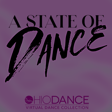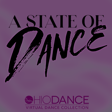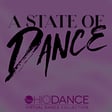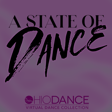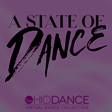
Deep Roots, Strong Branches: Raising Community with Suzan Bradford Kounta
This month's guest is Suzan Bradford Kounta. Suzan is a dancer, choreographer, educator, and cultural leader dedicated to the preservation and celebration of West African traditions. She is the first African American woman to serve as Executive Director of Columbus’s historic Lincoln Theatre, where since 2009 she has guided its vision and operations while championing its role as a cultural anchor for the community.
As co-founder and Artistic Director of the Thiossane West African Dance Institute—now celebrating 25 years—Suzan has built a nationally respected company and educational program devoted to passing on the dance, music, and cultural heritage of West Africa to future generations. Her work emphasizes not only cultural preservation but also physical and mental wellness, youth empowerment, and community building.
Suzan’s artistic and academic contributions extend into higher education and public life. She has served nearly a decade as adjunct faculty in The Ohio State University’s Department of Dance, previously taught at Antioch College, and is regularly invited to share her expertise at universities, conferences, and community gatherings across the country. Her dedication to the Central Ohio arts community spans more than 25 years of nonprofit leadership, arts advocacy, and intergenerational mentorship.
Having studied extensively in Senegal, Suzan continues to travel biannually to deepen her knowledge of traditional West African dance and culture. She has taught and choreographed for countless schools, community centers, treatment programs, and professional stages, fostering spaces where the arts are a constant source of resilience and connection.
Forward-thinking and committed to collective action, Suzan embodies the belief that “as the world turns, the arts remain the constant variable for humanity.”
OhioDance A State of Dance is a six-part series coming out the fourth Friday of each month through November 2025. This podcast is driven by the OhioDance mission to secure the foothold of dance in Ohio through increasing visibility, firming viability, and elevating the position of dance in Ohio.
In 2016, a five-person team set out on a mission to capture the achievements of persons and institutions who have shaped the intricate diversity of dance history and practice within the state of Ohio and weave them together in an easily accessible digital format. This we call the OhioDance Virtual Dance Collection. As of 2025 we have highlighted 42 individuals and institutions. The team has traveled over 5000 miles and interviewed hundreds of individuals in all five regions of Ohio. vdc.ohiodance.org
If you like what you are listening to and are not a member of OhioDance, you can go to ohiodance.org and click the membership button to join and receive the many benefits that come with your membership. You can also donate through our purple donate button.
